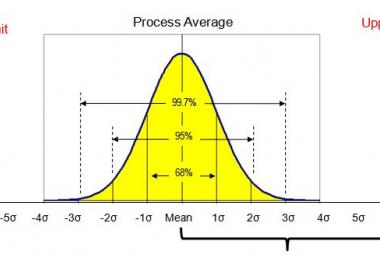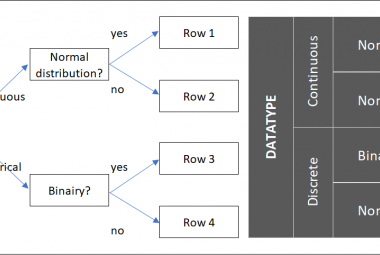In ‘The Lean Manager’, Ballé & Ballé distinguish two different management styles: Traditional management (management through systems) and Lean Management (Management-based on solving problems). In this novel, a factory in France undergoes a Lean transformation in which the seven steps of management based on problem solving are completed. In addition, the three principles of continuous improvement are described: creating clear goals (1), five questions to manage Kaizen (2) and Genchi Genbutsu (3).
The Lean Manager in this novel describes the management style with the aim of continuous improvements to the process as follows: “I don’t need an IT to run my system and I don’t need a quality department in order to set quality procedures. I need someone who can tell me exactly what is happening, where and when things go wrong in the process, so I know where I can improve. ”
The authors describe two types of flows: PRODUCT FLOW AND FLOW OF PROBLEMS. In a Lean organization both types of flow should be optimized. The product flow describes the ‘hard’ side of Lean and includes the physical flow of materials from the input materials to final product and ultimately the customer. It is relatively easy to measure how much time a product spends in line and how many products are in stock at any given time. Stabilizing the product flow can be achieved by using dedicated machines for products (1), fixed people working on fixed a machine (2), and a leveled production mix through Heijunka (3).
The flow of problems describes the softer side of Lean. A problem flow starts as soon as the problem is discovered by an employee and ends when it is solved by one. Both types of flows can contain waste. The largest wastes in the flow of problems are the time it takes before the problem is solved and the resources (people) needed to solve the problem. These wastes can be reduced through kaizen workshops where employees are taught to solve their own problems using the basis of Lean tools. Examples of topics for kaizen workshops are SMED, Quality Analysis and Line- balancing (Heijunka). As a rule of thumb, each operator should at least take part in a workshop once a year, and every manager twice a year.
As a manager, how do you give direction to improve the flow of problems? The authors describe MANAGEMENT BASED ON PROBLEM SOLVING in seven steps.
Step one: Genchi Genbutsu, which means ‘go and see’. All employees must always go to the shop floor where the problems occur. There is no chart or dashboard available that will show the true nature of the problem as well as the place where the problem actually occurs.
Step two describes the importance of visual management. Make problems visible through visual signals so everyone on the shop floor immediately notices when an abnormality occurs, which may affect performance.
Step 3 describes measuring performance in both conditions as well as performance. Only by measuring performance, employees can get direct feedback on their actions which can result in early problem solving before performance is compromised.
When performance is measured, the fourth step describes defining standard work for every workstation, to ensure the best possible performance for each task.
Step 5 is defined as training all employees in finding root causes of problems by using the 5 times why analysis, the PDCA cycle, or a fishbone diagram. Having all employees trained in problem solving results in quick responses to changing conditions or performance.
In step 6, employees experiment and reflect on their actions to find a preventative solution to a problem. The preventative solution is the true solution to a problem, which prevents the problem from reoccurring in the future.
The final step, step seven, is the power of the learning organization to draw conclusions from the experiments in step 6, update the standards from step four to capture the improvement and copy the findings to other workstations in the factory with similar problems.
To go through these seven steps, a certain management style is needed. Ballé and Ballé describe THREE PRINCIPLES OF CONTINUOUS IMPROVEMENT for managers to encourage employees to solve problems. The challenge: what do we learn (1), Kaizen: nothing is perfect, so everything can be improved (2) and the previously described Genchi Genbutsu: go to where it actually happens (3).
To help defining the goals, the manager can ask a few questions: “Do you do what you need to do to learn what you need to learn? Or do you act as you see fit?” Without an improvement target or personal development plan, people will just do what they think is right for them at that time, which usually is the path of least resistance (and least learning). “Have you learned enough of what you needed to learn to accomplish your goals?” helps to determine whether the employee will achieve the desired results by continuing the current way of working.
The second principle is kaizen (continuous improvement). The authors describe five questions which can be asked to manage Kaizen: What problem are you solving (1)? What outcome do you expect to achieve (2)? Which Lean principle can be applied to create that outcome (3)? Are results achieved as planned (4)? What have your learned (5)? The first two questions encourage the individual to contribute in continuously improving his way of working. The last three questions are focused on conducting experiments to solve problems preventively and to learn from them.
Genchi Genbutsu, has four principles: develop insight through hypotheses to ‘test and see’ (1), generate consensus with operators for problem definitions (2), check progress of improvements and their connection to the organizational objectives (3) and involve operators in all improvements (4).
A Lean organization is more than a production process in which Lean tools are implemented to reduce inventories or reduce lead times. A real lean organization focuses on developing people so that everyone in the organization is trained to solve problems. Continuously solving problems helps to grow the performance of the organization. The main tasks of a manager are: going to the shop floor and learn what problems occur -Genchi Genbutsu- (1), asking questions to employees about their improvement goals and progress (2), and most importantly, coaching and supporting employees in problem solving.
Continue to:
Lean for the Process Industry - P.King
REFERENCE:
Ballé, F., & Ballé, M. (2012). De Lean Manager - een roman over een Lean Transformatie. Driebergen (NL): Lean Management Instituut. (order this book)












